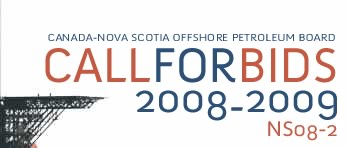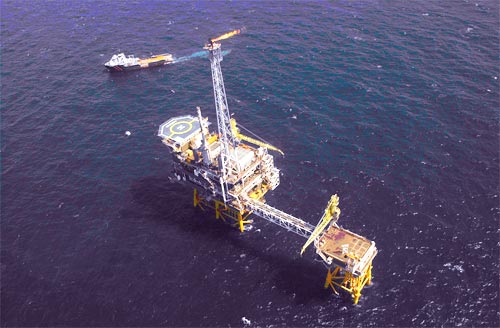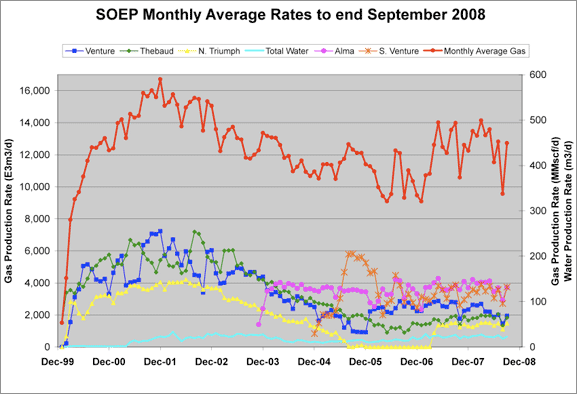

What's New
Previous Call for Bids
Exploration History
Exploration Opportunities
Offshore Developments
Geoscience Research Centre
Data Management Centre
Rights Management
Work and Activity Authorizations
Resource Conservation
Offshore Health and Safety
Environmental Protection
Industrial Benefits
Written Comments
Key Contacts

Sable Offshore Energy Project

The Sable Offshore Energy Project (SOEP) involves the development of six natural gas fields near Sable Island which is located approximately 225 kilometres off the east coast of Nova Scotia. The six fields are: Venture, South Venture, Thebaud, North Triumph, Glenelg and Alma. Together, these fields contain an estimated 85 billion cubic metres (3 TCF) of recoverable gas reserves. SOEP is operated by ExxonMobil Canada Ltd. with its partners Shell Canada Limited, Imperial Oil Resources Limited, Pengrowth Corporation, and Mosbacher Operating Ltd.
Production began in December of 1999 with a total project life expectancy of about 25 years. New discoveries could extend that project life. The Project design rate is 14.4 million cubic metres per day of raw gas (510 mmscf/d) production yielding 13 million cubic metres per day of sales gas. Approximately 3,300 cubic metres of natural gas liquids will also be produced. This production rate can be increased if market conditions and gas supplies warrant.
The gas fields are being developed in two tiers. Tier I fields are Thebaud, Venture and North Triumph. Thebaud began production December 31, 1999 followed by Venture and North Triumph in February 2000. Tier II fields are Alma, South Venture and Glenelg. Alma began production in November 2003 followed by South Venture in December 2004. The Glenelg field is presently under review by ExxonMobil and partners. A total of 28 development wells are proposed for the six fields. These were and will be drilled using jack-up rigs. The number and sequence of wells will be subject to adjustment throughout the Project depending on drilling results, production performance and market conditions.
In Tier I, central facilities are installed at Thebaud for production, utilities and accommodation. Satellite platforms are located at Venture and North Triumph. These are unmanned wellhead and production platforms. The Thebaud platform has systems for remote monitoring and control of the other platforms. Each of these unmanned platforms is equipped with small emergency quarters and a helideck. Hydrocarbons produced at these platforms are transported through a system of subsea flowlines to the Thebaud platform.
Unprocessed gas from the fields is separated and dehydrated at the Thebaud platform. The separated gas and hydrocarbon liquids and condensates are then recombined and transported through a subsea production gathering pipeline to landfall in the Country Harbour area of Guysborough County, Nova Scotia and then to a gas processing plant at nearby Goldboro. There, the gas is conditioned by removing natural gas liquids, condensates and remaining water. The sales gas then flows to markets in eastern Canada and the northeastern United States through an onshore pipeline. Natural gas liquids and condensate are transported by another onshore pipeline to a fractionation plant at Point Tupper for further processing before being sold.
In 2006, the Sable Tier II compression project began with the installation of a compression platform, which is bridge-connected to the Thebaud central processing facilities. These compression facilities were part of the approved Development Plan Application file for SOEP. The compression platform has been in operation since early 2007.
For more information see www.soep.com
Monthly production by field and well can be found at:

